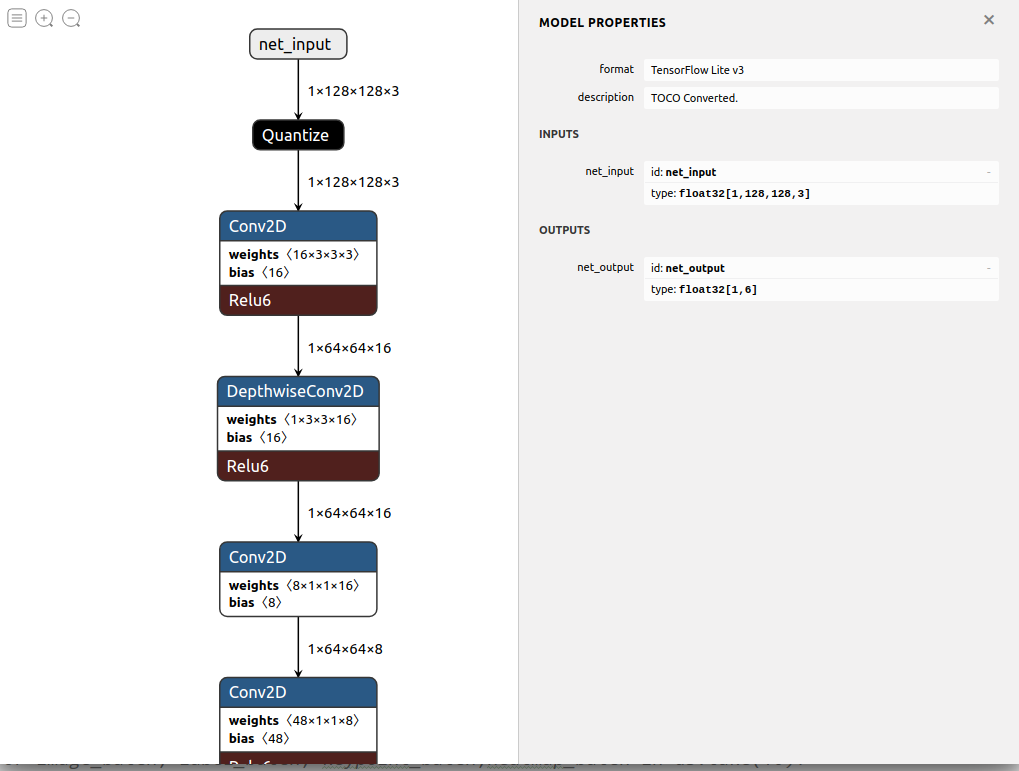传送门:
模型量化加速:https://www.atatech.org/articles/132554?spm=ata.13261165.0.0.453bd67dhgqUkd
TF量化训练:https://www.atatech.org/articles/127543?spm=ata.13261165.0.0.453bd67dhgqUkd
量化对端上深度学习模型推理可以说是必选项了,前面的文章已经多次介绍过Quantization-aware training怎么操作,本文简单介绍下Post Training量化。
话说二者有什么区别呢,Quantization-aware training是在训练过程中进行量化,能够更好保持量化后模型的性能。Post training quantization意思是训练玩的模型直接拿来量化,通过在一组sample data推理模型,统计量化所需要的参数[min,max]。通常Post training quantization的精度损失大于Quantization-aware training,所以在以往的工作中我们主要推荐使用Quantization-aware training。
那Post training quantization是不是就毫无用处了呢?显然不是。
- Post training quantization在一些相对”重“的模型上,精度损失很小
- Quantization-aware training训练速度会慢一些,
- Post training quantization只需要模型就可以完成,比如如果模型是从其他训练框架转换而来,这时候就只能使用Post training quantization
根据官方的训练教程:
https://github.com/tensorflow/tensorflow/blob/r1.14/tensorflow/lite/tutorials/full_integer_post_training_quant.ipynb
我改造了一个更加方便适配各种输入模型的脚本, 直接从文件系统读取Sample图像:
import tensorflow.compat.v1 as tf
#Eager Mode is essential!
tf.enable_eager_execution()
import sys
import glob
if sys.version_info.major >= 3:
import pathlib
else:
import pathlib2 as pathlib
import random
import cv2
import numpy as np
tf.logging.set_verbosity(tf.logging.DEBUG)
pb_file='model.pb'
input_arrays=['net_input']
output_arrays=['net_output']
input_shapes=[1, 128, 128, 3]
sample_img_dir='/tmp'
converter = tf.lite.TFLiteConverter.from_frozen_graph(graph_def_file=pb_file,
input_arrays=input_arrays,
output_arrays=output_arrays,
input_shapes={input_arrays[0]:input_shapes})
converter.allow_custom_ops=True
tflite_model = converter.convert()
tflite_models_dir = pathlib.Path("./tmp/tflite_models/")
tflite_models_dir.mkdir(exist_ok=True, parents=True)
tflite_model_file = tflite_models_dir/"model.tflite"
tflite_model_file.write_bytes(tflite_model)
tf.logging.set_verbosity(tf.logging.DEBUG)
converter.optimizations = [tf.lite.Optimize.DEFAULT]
def preprocess_img(img):
# preprocess
img = cv2.resize(img, (128, 128))
# FLOAT32
img = img.astype(np.float32)
# img=(img/128.)-1.
img = img - 128.
return img
def create_datastream_from_imgs(img_dir):
img_path_list=glob.glob(img_dir+'/*.jpg')
random.shuffle(img_path_list)
img_path_list=img_path_list[:200]
imgs_list=[]
for path in img_path_list:
img=cv2.imread(path)
img=preprocess_img(img)
imgs_list.append(img)
imgs=np.stack(imgs_list,axis=0)
return tf.data.Dataset.from_tensor_slices((imgs)).batch(1)
ds=create_datastream_from_imgs(sample_img_dir)
def representative_data_gen():
for input_value in ds.take(20):
yield [input_value]
converter.representative_dataset = representative_data_gen
tflite_quant_model = converter.convert()
tflite_model_quant_file = tflite_models_dir/"model_quant.tflite"
tflite_model_quant_file.write_bytes(tflite_quant_model)最初我在tf1.14上测试,遇到段错误的问题,也许某些同学会遇到:
Process finished with exit code 139 (interrupted by signal 11: SIGSEGV)
这时候,只需要升级到tf-nightly版本就可以解决了。
成功后得到了这样的模型:
和Quantization-aware training得到的模型略有不同的是,输入输出仍然是Float的,而Quantization-aware training的模型输入输出都是int8的,所以输入Node之后和输出的Node之前,它相应添加了Quantize和DeQuantize的Node。
在一个简单的分类任务上测试了一下,精度下降1.4%,马马虎虎还可以接受





